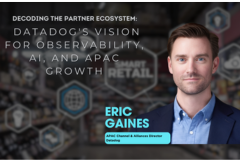In an increasingly connected world, while software plays a dominant role, hardware too needs to be able to provide a secure base for the apps performances to be played out. From minitiaturisation to superior security attributes, Asus offers everything innovative technology can, without any compromise on performance or quality. Vinay Shetty – Country Head, Component Business, Asus (India), believes that even in an economic downturn that does not spare hardware or software, constant evolution in terms of innovation as well as business strategies, is the key to success. Excerpts from the interview –
1. What are the latest trends in hardware, especially in motherboard systems, given the huge steps minitiaturisation technologies have taken?
- When it comes to miniaturisation, I feel our Maximus VII Impact motherboard speaks volumes to the level of technological advancement we’ve been able to achieve. To put it simply, it has everything you’d find in our flagship ROG motherboard, shrunken down to fit in the palm of your hand. And you don’t compromise on anything. It has all the latest trends like an M.2 port, ESD guards for all the ports to protect against surges, high-end audio comparable to dedicated sound cards and dual-band Wi-Fi AC support, to name a few.
2. Apparently, hacking hardware is now easier than before. How is Asus fighting this threat?
- ASUS is the first in the market to use enterprise level, anti-hacking features in our consumer routers. We’ve tied up with Trend Micro, a global leader in security software, to achieve the highest level of security against hackers in our AiProtection feature. We’ve worked extensively with Trend Micro to optimise the anti-hacking features and by using the highest quality components; you can have the best protection without sacrificing performance.
3. In the connected world today, hardware needs to be up there with great connecting software. Examples are wearable devices. What is Asus planning for these products?
- We already have ASUS AiCloud for our routers which lets you access all your personal data from home, no matter where you are. By using the app on your iPhone or Android phone, you can securely login to your home network from anywhere in the globe – all you need is an Internet connection.
4. IT spending still hasn’t picked up drastically, and hardware’s share is slower than software’s in IT spending. How do you tackle this weakness in business?
- Asus has a wonderful culture of diversified products in the portfolio and all of them, right from the design stage, are developed with the end user in mind. We have lot to offer and introduce to the user that will infuse some booster in the weak market scenario. Users are finding newer solutions and are keen to spend on newer innovation / technologies, which Asus has been fulfilling for years.
5. What are your plans for growth, given software is the star of IT?
- Software and hardware are essentially two sides of the same coin. They both co-exist. We have many innovative products lined up for 2015 which will push developers to explore new areas and even align existing softwares to new technologies.
6. India is more acclaimed for its software prowess. How do you compete in the world market for hardware?
- ASUS has recently achieved a milestone of having sold over 500 Million motherboards worldwide. This is a huge accomplishment and speaks volumes of our reach on a global scale. We’re also the world’s best-selling graphics card brand, according to Digitimes and in India, we have the highest market share for graphics cards. We hope to grow this even further in the years to come.
7. changing innovative technologies are driving faster towards less hardware and more apps online. How do you plan to tackle this situation in the industry scenario?
- Both Hardware and Software are complementing each other; we cannot isolate this parallel demand. To run those apps, we all need better and faster devices and we need to understand what kind of hardware is needed…. We invest only once on a good product therefore who is winning is not the question as both markets complement each other
 Latest Technology News Today – Get Latest Information Technology Updates and Services Latest Technology News Today – Get Latest Information Technology Updates and Services
Latest Technology News Today – Get Latest Information Technology Updates and Services Latest Technology News Today – Get Latest Information Technology Updates and Services 









